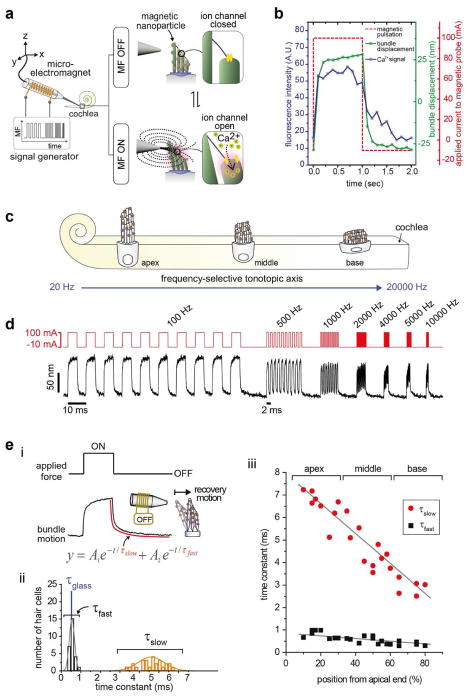Figure 6.
MNTs for studying fast mechanotransduction dynamics with the non-contact mode. (a) Schematic illustration of the high-frequency magnetic control of hair bundle oscillation. Hair bundles labeled with 40 nm Zn-doped ferrite nanocubes are pulled with a micro-electromagnet. Mechanical tension on the tip links, induced by hair bundle deflection, opens the ion channels, creating an influx of Ca2+. (b) Gating of the mechanosensitive ion channels in a hair bundle using MNTs. The Ca2+ influx in the bundle coincides with the applied magnetic pulses. (c) Hearing range of human hair cells. Hair cells are located along the tonotopic axis of the cochlea and detect specific resonance frequencies. (d) Magnetic entrainment of hair bundle oscillations; pulse frequencies of 100, 500, 1000, 2000, 4000, 5000, and 10000 Hz are applied (top), and the hair bundle displacements are observed (bottom). (e) MNTs for interrogating the biomechanics of the hair bundle recovery process. (i) The recovery motion of the deflected hair bundle is tracked and fitted with second-order exponential functions (equation, red line) to extract two biological components (τslow and τfast). (ii) Distribution of τslow and τfast of the middle-region hair bundle. The time constant of a glass fiber (τglass, blue) is shown as a passive object for comparison. (iii) Tonotopic dependency of the time constants measured along the entire tonotopic axis from the apical to the basal region of the cochlea. Reproduced with permission from refs 21, 22, Copyright 2014, 2016 American Chemical Society.

